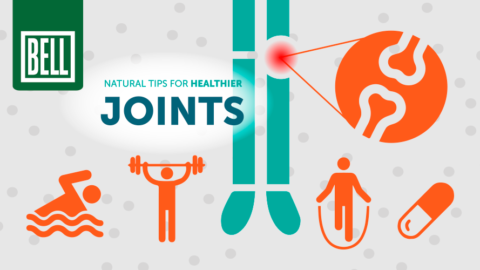Inflammation is the body’s response to an unwanted stimuli. This response is mediated primarily by the immune system. The main objective of an inflammatory...
What is Gout? Symptoms and Prevention.
Gout classified as a joint condition categorized alongside osteoarthritis, rheumatoid arthritis and others. However it is uniquely different with respect to its disease process and management.
Gout occurs when excessive levels of a compound called uric acid is present in the blood. These high levels of uric acid can make their way to a joint and crystallize into sharp needle-like form. Once situated and crystallized within a joint symptoms such as extreme pain, stiffness, swelling, and redness occur due to the underlying inflammatory process. The most commonly affected joint is the in the big toe, but it can impact other joints such as the knees, ankle, wrist or elbow.
Excessive uric acid levels within the body is the main driving force behind gout but not everyone has these abnormally elevated levels. Normally, the human body breaks down a compound called purines which is found in human cells, alcohol, shellfish, animal derived protein sources such as organ meats and red meats. As the purines are broken down, a by-product compound known as uric acid is formed. In healthy individuals, the uric acid flows through the blood stream and is eventually eliminated from the body via urination. However, if high levels of purines are broken down and not efficiently removed from the body via the kidneys and urine then it can lead to a buildup within the blood and eventually the uric acid crystallizes with a joint.
The buildup of uric acid within a joint can cause a tremendous amount of pain and swelling that can last between 5 to 10 days. Each incidence is commonly referred to as a gout attack. These attacks are often brought on suddenly and on average an individual prone to gout will experience about eight attacks per year.
Gout is more likely to occur in men than women. However, it is just as common in menopausal women. Men and menopausal women naturally have high uric acid levels. Men are three times more likely to have higher levels of uric acid than women and menopausal women have similar levels during this particular stage of life.
Risk factors for gout:
- Male or menopausal women
- Obese or overweight
- Diabetes
- High blood pressure
- Kidney disease
- Diet high in animal protein
- Excess alcohol intake
Managing the number of attacks per year and relieving symptoms during an active attack are important for overall health. Some lifestyle suggestions to help with gout include the following:
- Drink plenty of water: water helps support healthy kidney function and encourages urination to help eliminate uric acid from the body
- Maintain a healthy weight: a common risk factor for gout is obesity and being overweight. Individuals who lose weight report a reduction in gout attacks. Additionally, the loss in excess weights eases strain on joints, especially during a gout attack.
- Diet: limiting foods high in purines such as alcohol, red meat and shellfish naturally reduce uric acid levels in the body.
- Natural health products: a variety of natural products that address uric acid levels, inflammation, kidney support, weight management and more can provide complimentary support for gout sufferers. Herbs such as black cherry, turmeric, and celery seed can help with uric acid control and address inflammation.
Related Posts
Your immune system is a complex network of different cells with a range of signals that help guide the proper upkeep of your entire body. Most are familiar...
Caring for your joints is vital to living a healthy and happy life. Use these natural tips to better care for your joints and live more comfortably.
Click...
Your immune system is a complex network of different cells with a range of signals that help guide the proper upkeep of your entire body. Most are familiar...
Caring for your joints is vital to living a healthy and happy life. Use these natural tips to better care for your joints and live more comfortably. Click...
Categories
- Allergy Relief
- Bell Lifestyle News
- Brain and Vision Health
- Depression
- Digestive Health
- Eating Healthy
- Energy Boosts
- Fitness
- Foods for Energy
- Heart and Lung Health
- Herbs
- Immune System Support
- Lifestyle
- Men's Health
- Mental
- Motivation
- Natural Remedies
- Nutrition
- Pain Relief
- Physical
- Recipes
- Relationships
- Sexual Health
- Skin and Hair Health
- Sleep Health
- Social
- Stress Relief
- Uncategorised
- Videos
- Weight Management
- Women's Health
- Your Wellness Now
Follow us on Twitter
#90 Bladder One for Women™ is a convenient one-a-day capsule for urinary tract health, featuring herbal extracts in… twitter.com/i/web/status/1…
May 2023Urinary tract infections - UTI: To treat or prevent? That is the question. Find out more about causes and treatme… twitter.com/i/web/status/1…
May 2023"How you feel is very important to how you look. Healthy equals beautiful." - Victoria Principal #womenshealth https://t.co/OPShoEbOXb
May 2023
© Copyright 2024. All rights reserved.





